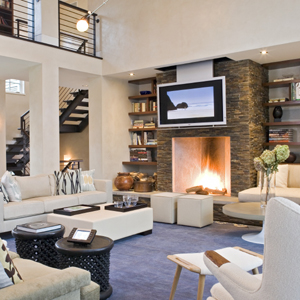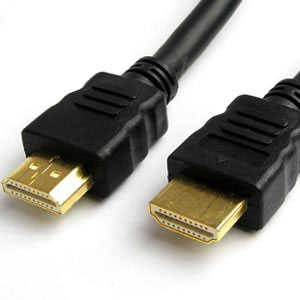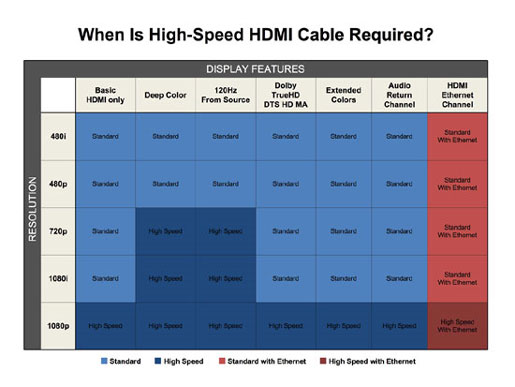These suburban homeowners didn’t let high tech clutter up their contemporary style, but they did let new home controls enhance their daily lives.
Where’s the basement home theater room? What, no 100-inch screen and jazzy theater chairs? There’s a 60-incher in the playroom—but the three teenagers have to share the TV because none of their rooms have one?
These suburban homeowner’s aren’t technophobes or Luddites. They just wanted a way technology could improve their daily living, without taking away from the look of their home. The house doesn’t have a dedicated theater room, but it boasts several above-average-size displays, three rooms with full surround sound, carefully placed architectural speakers, home automation that includes wireless touchpanels, extensive lighting control and networking that helps feed the whole-house audio. Working with custom electronics pros, architects and designers who understood the homeowners’ concerns made the influx of technology more palatable—and ultimately more enjoyable.
To See or Not to See?
That question had a simple answer when the architect discussed entertainment plans and options with the homeowners. They wanted to keep the TVs’ prominence to a minimum, and one solution to that was “out of sight, out of mind.” Enter the custom electronics (CE) pros, whose work on stealthy plasma screen installations was just one important aspect of this overall home systems solution.
The house’s open-concept layout and contemporary interior design would only enhance the impact of the great room and family room displays. This, in turn, inspired the homeowners’ to want to limit that impact.
“Immediately we suggested that all the electronics equipment go in a closet somewhere so [they wouldn’t] be seen,” . “That led to the conversation of a television in the living space. As much as they wanted one, they didn’t want one. Once we had an understanding of the feel of the home, we designed around that.”
The homeowners were most creative with the high vaulted ceiling in the great room. All eyes turn to the large stone fireplace, flanked by built-in bookshelves, all of which rise to an alcove ceiling. The initial thought was to install a flat-panel TV that could be mounted within the room’s shelving and articulate toward viewers. But the 55-inch plasma that was requested didn’t work in such a high-traffic area.
“We decided to locate it more centrally, above the fireplace, which we found was better for the seating arrangement in the room,” . “Once we realized we had enough room above the fireplace for a lift, Roz wasn’t hesitant at all.”
Young, who had worked with IES on other home projects, coordinated with local metal workers and a Venetian plaster contractor so the SVS Lifts motorized lift device would look completely flush when retracted into the 6-foot soffit cavity. Lowering the 250-pound lift at the push of a button can be quite a site for guests to behold.
Put the Audio Away
The tuck-away TV solved one aesthetic problem, but what of the accompanying surround sound? “The interior design was very clean and uncluttered, and that went for everything: furniture, lighting, audio and video,” Young says. “There’s no good spot for a grille or a speaker, that’s pretty much the philosophy, but the sound and viewing have to work perfectly together. Making the audio invisible was a challenge.”
Young worked with IES to incorporate Boston Acoustics in-wall speakers within the bookshelves, and a pair of Sonance surround speakers in other walls. Even two in-wall Velodyne subwoofers pump out bass while hidden from view. In this room and others, most speaker grilles were painted to match the wall finishes.
Early in the project, a mechanical closet next to the basement playroom was designated as the central equipment hub to which IES routed cables. One rack primarily contains house-wide audio gear, amplifiers and cable TV boxes, while the other handles surround-sound equipment and home automation controllers. The racks were raised about 4 inches off the floor in case of any water leaks, and ample ventilation was piped into the room to keep gear properly cooled.
The Crestron automation (programmed by John Meyer of Crestron specialists Elexos) keeps the tunes flowing throughout the house, with selections accessible from a number of touchpanels. Rather than program page after page of choices for each family member, the owners and children can pop an iPod into one of the Crestron docking stations around the house for favorite music and playlists—Mom’s office and the playroom naturally being two of those locations. Apple Airport Extreme routers enable networking of iTunes apart from the Crestron docks.
“I’d say the greatest benefit of [the installation] is being able to play digital music throughout the speakers in the house,” says Mom. “The kids really enjoy being able to use their iPods in the docking stations, especially when they have friends over.”
Playtime for All
Rather than being a traditional “man cave,” this family’s playroom is more of a “teen cave.” But it doesn’t stray much from the home’s overall design theme.
A long custom wall cabinet contains a desk, shelves, toy bins—and a 61-inch Samsung 1080p DLP screen. Multicolored sliding panels hide or reveal areas of the wall unit, again providing an option to keep a TV out of sight when turned off.
Audio in the playroom is stealthy as well, with much of the surround sound flooding the space via four Sonance in-ceiling speakers, complemented by a Focal center channel and Velodyne subwoofer.
Mom and Dad aren’t completely against their children having individual teen caves in their bedrooms. The rooms were even readied with Verizon FiOS wiring. “Our decision to limit the electronics in the kids’ rooms was purely a parenting decision,” Mom says. “They have laptop computers with a wireless network, which can be used for homework and leisure time, but we also have the ability to remove those options simply by taking away the laptop. We also wanted to encourage the kids to utilize the comfortable family spaces that we created, so we can spend leisure time together.”
Lights … Touchpanels … Action
One way to eliminate clutter, while adding usefulness, was employing an extensive lighting control system tied into the Crestron automation. The home is blessed with natural light through tall great room windows, for example, along with plenty of accent and mood lighting. But the potential wall acne of dimmers and switches almost put a blemish on this part of the project.
“The original lighting plan had some very large switchboxes, which were aesthetically not pleasing,” says Bartolomeo. “We introduced them to a Lutron [HomeWorks] lighting system, which consists of simple single-gang keypads that integrate with the Crestron system.”
Lighting designer Peter Romaniello of Connecticut-based Conceptual Lighting redesigned the lighting plan to ensure that the lighting complemented the home’s contemporary interior design, and that its control (programmed by IES managing partner Dean Valencic) would allow more than one zone to be engaged at a time. “With open architecture you always have to think about not only adding focus to the room you’re in, but also the lighting in the adjacent room so it doesn’t feel dead,” he explains.
About 16 lighting loads cover the home’s open great room, kitchen and family room space, so control and scene-setting solutions made sense. In the kitchen, a COOK scene boosts lights to full brightness for food preparation while adjacent rooms are dimmed, for instance. A MORNING scene lights the way from the bedrooms to the kitchen to the mudroom and out the door. For entertaining, a PARTY scene will dim the living and family room to 50 percent, turn on patio and front entryway lights and emphasize artwork in certain areas.
More to Come
The lighting system took time to fine-tune, but the scenes are constantly in use, especially in the kitchen and great room areas. As with other aspects of a sophisticated home control system, there was a learning curve (see sidebar “Going to Class”) that is ongoing for these homeowners.
Wired and wireless Crestron touchpanels provide access to most of the lighting, music and climate controls. A 10-inch model by the bustling kitchen proved pragmatic, as the family uses it to call up the different scenes and music selection. But maybe the biggest benefit of this home system is that Mom and Dad stepped into the slightly scary world of technology and found that they could do so on their terms.
So what’s next? “Now that we’ve been in our home for a while, we’re thinking of more ways that the Crestron system can work for us,” Mom says. “When we started this house project, it was hard to envision how we would live in the space as our children grew older. The technology in our home is keeping pace with our teenagers, and that says something.”
by Arlen Schweiger
http://www.electronichouse.com/article/tech_living_clutter_free_and_easy/C154
Custom Installation Services, LLC – Audio/Video Sales, Service and Installation in North Carolina and South Carolina




 We outline four types of cables and when each is necessary for 1080p.
We outline four types of cables and when each is necessary for 1080p.

